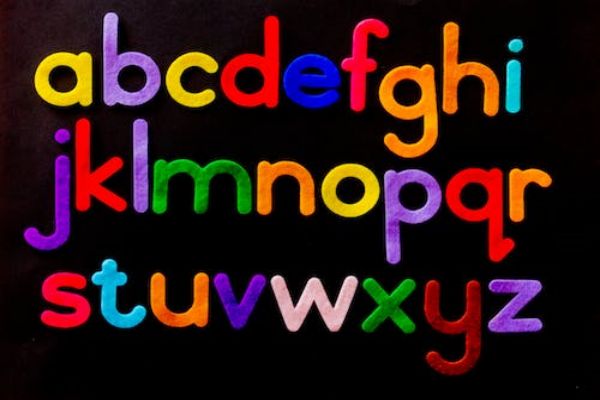整理了一下,供你参考。 (1)基数词的读法
我们先从基数词入手。首先掌握三位以内数字的读法,因为它是多位数字的基础,一旦熟练掌握,再借助一个逗号,便可轻松应付四位以上任何庞大的数字。我们可以通过例子来说明这一点。

①3—5位数的读法
202读作:two hundred(and)two
234读作:two hundred(and)thirty-four
1, 234读作:one thousand two hundred(and)thirtyfour
但是在读法上须注意以下几点:
a.在英式英语中,一个数的最后两位(十位和个位)得用“and'’,但美式英语中则不用。如:3,077读作:U.S:three thousand seventy—seven.
b.不定冠词“a”只在数的开头才和hundred,thousand等连用。试比较:
146读作:ahundred(and)forty-six
2,146读作:twothousand,one hundred(and)fortysix
c.1,000这个整数我们说athousand,在and前我们也说a thousand,但是在一个有百位数的数目前就得说one thousand试比较:
1,031读作:a thousand,(and)thirty-one,
1,150读作:one thousand,one hundred(and)fifty
d.hundred,thousand和million这几个词的单数可以和:“a”者“one”连用,但是不能单独使用。在非正式文体中“a”比较常见;当我们说话比较准确的时候就用“one”试比较:
I Want to live for a hundred years.
The journey took exactly one hundred days.
e.我们常常说eleven hundred(1,100),twelve hundred(1,200)等,而不说one thous and one hundred.从1,100到1,900之间的整数,这种说法最常见。
5位以上数字的读法
11,234读作:eleven thousand two hundred(and),thirty—four
155,721读作:one hundred(and)fifly-fivethous and seven hundred(and)twenty-one
6,155,702读作:six million one hundred(and)fifly-five thous and seven hundred and two
26,000,008读作:twenty-six million and eight
326,414,718读作:three hundred(and)twenty-six mil-lion,four hundred(and)four teen thous and,seven hundred(and)eigh-teen
4,302,000,000读作:four billion three hundred(and)two million
由以上一组数字可以看出,多位数由右向左每3位有一逗号,这个逗号的作用非同小可,在记忆数字时,它可以帮我们很大的忙!
逆向第一个逗号读thousand;向左再推三位,第二个逗号读million;第三个逗号读billion;第四个逗号就是trillion。这几个逗号的作用在于,当我们听到若干thousand时,立即写下这个数,并在其后打一个逗号,并留出3位;当听到若干million,则写下数字,并在其后打一逗号,留出6位;听到若干billion,方法同上,在后面留出9位,后面的million、thousand依此法类推,让所有数字各就其位。
例如,当你听到“twenty thous and andfour'’写出20,“and four”意为后一组仅有个位,即:004,那么,这个数字完整地写下来就是20,004;若听到“six million twenty thousand four hundred and twenty—three,”则第一步先写:6,020,再将最后一组423写在第一个逗号后面。完整的翠字为6,020,423。若听到“One billion,one hundred and four million,twenty thousand four hundred and twenty-three”:主第一步写出1,104,第二步接下去写第三组020,第三步二写423,这样得到的完整数字便是1,104,020,423,由此:见这个三位一逗号的作用有多大。只要我们在平时的训练中加强对三位数读写的训练,能分辨“ty”与“teen'’,并能借助这个不可缺少的“逗号”,无论数字多么大,也不会对我们造成障碍。
(2)序数词的读法
lst读作:(the)first
2nd读作:(the)second
3nd读作:(the)third
4th读作:(the)fourth
20th读作:(the)twentieth
21st读作:(the)twenty-first
22nd读作:(the)twenty-second
23rd读作:(the)twenty-third其它以此类推。
A.分数
(3)分数、小数和百分比的读法;分数中分子用基数词表示,分母用序数词表示。先读分子,后读分母。当分子大于1时,分母要加“s”。例如
1/2读作:a/one half(口语中更倾向于用“a”代替“one”)
1/3读作:a/one third
1/8读作:an/one eighth
1/4读作:a/one quarter(fourth)
2/3读作:two thirds
1/5/9读作one and five ninths
比较复杂的分数常常用over这个词表示。如:
317/509读作:three hundred and seventeen over five hundred and nine
3/4hour,7/lOmile则说three quarters of an hour(三刻钟),seven tenths of a mile(十分之七英里)。
B.小数
含小数点的数字,小数点“.”读“point”,小数点后的数若是两位以上,则分别读出。
0.5读作:(nought) * point five
0.25读作:(nought) point two five
0.125读作;(nought)point one two five
93,64m读作:ninety-three point six four meters
2’15.11’’读作:two minutes fifteen point one one seconds
C.百分比
读百分比只需在相应的数字后加“percent"。如:
25%读作twenty-five percent
11.3%读作eleven point three percent
(4)年代及日期的读法
数字表示的年份通常分成两半来说。
2000B.C.读作:two thousand BC
1558读作:fifteen fifty-eight
1603读作:six teen(hundred and)three/sixteen oh three
921读作:nine twenty-one
日期的表达英式和美式有所不同,请注意区别。
在日期的写法上,英式先写日子,美式先写月份。
英1999年4月6日=6th April l999
美1999年4月6日=April 6,1999
在读法上,英国人有两种表达方式:
1.April the sixth,nineteen ninety-nine
2.The sixth of April,nineteen ninety-nine
美国人则一般这样表示:
April sixth,nineteen ninety-nine(省略“the")
(5)钟点的读法
钟点的读法分英式和美式两种,我们应对此加以注意。
英7:00 seveno’clock a.m./p.m.
8:15 a quarter past eight/eight fifteen
9:30 half past nine/nine thirty
9:45 a quarter to ten/nine forty-five
10:03 three(minutes)pastten/ten ohthree
美用法基本相似,只是英国用past之处,美国通常用after;英国用to之处,美国常用fo。美5:15 a quarter after five/five fifteen
9:30 nine thirty/half past nine*
9:45 a quarter of ten/nine forty-five
9:55 five of ten/nine fifty-five
当用于军事命令和旅行时间表时,其读法如下:
07:00 (Oh)seven hundred hours=7:00a.m.
09:15 (Oh) nine fifteen=9:15a.m.
12:00 twelve hundred hours=midday/noon
13:45 thirteen forty-five-1:45p.m.
19:00 nineteen hundred hours:7:OOp.m.
23:05 twenty-three(Oh)five--11:05p.m.

24:00 twenty-four hundred hours=midnight
24:10 twenty-fourten’ten past midnight
(6)电话号码、温度与门牌号的读法
A.电话号码
读电话号码时,每个数字一一读出,“o”英式读d1〔ou];美式则读zero(有时也读nought)。英国人在读两个相同数字时,通常读成doublex尤其是当这两个数处在同一组时(电话号码由右向左每两位一组)。例如:
345—6638读作:three four five,double six three eight
307—4922读作:three oh seven,four nine double two而美式则读成:three zero seven,four nine two two但如果相同的两个数不在同一组,则可以有两种读法。例如:62899033即可读成six two eight double nine oh double three,也可读作six two eight nine nine oh double three,但99033绝不可读作nine nine oh three three。相反,在遇到号码中数字相同时,美式则一律重复念出该数字。但英式有一例外,英国的紧急电话999却总读成nine,nine,nine。
B.温度
表示温度有华氏(Fahrenheit)和摄氏(Centigrade)两种。英美均使用华氏作为温度的计量单位。摄氏用法现已日渐普及。
15℃读作:fifteen degrees Centigrade(或Celsius)
32℉读作:thirty-two degrees Fahrenheit
0C读作:nought degrees Centigrade
-5C读作:five degrees below zero
C.门牌号.
门牌号遇三位数分别读出各数字,遇四位数时则分成两半来读。例如:
Room 302读作:Room three O two/three zero two
3491 King Street读作:thirty-four ninety-one King Stred
英语1~50的数字怎么读?
1:one [w?n]
2:two? [tu:]
3:three [θri:]
4:four [f?:]
5:five[faiv]
6:six? [siks]
7:seven['sevn]
8:eight [eit]
9:nine [nain]
10:ten? [ten]
11:eleven [i'levn]
12:twelve[twelv]
扩展资料基数词在句中可作主语、宾语、定语、表语、同位语。
1、The two happily opened the box. 两个人高兴地打开了盒子。(作主语)
2、I need three altogether. 我总共需要三个。(作宾语)
3、Four students are playing volleyball outside. 四个学生在外面打排球。(作定语)
4、We are sixteen. 我们是16个人。(作表语)
5、They three tried to finish the task before sunset. 他们三个人尽力想在日落前完成任务。(作同位语)
千位数以上 从数字的右端向左端数起,每三位数加一个逗号“,”。从右开始,第一个“,”前的数字后添加 thousand,第二个“,”前面的数字后添加 million,第三个“,”前的数字后添加 billion。然后一节一节分别表示,两个逗号之间最大的数为百位数形式。
基数词在表示确切的数字时,不能使用百、千、百万、十亿的复数形式;但是,当基数词表示不确切数字,如成百、成千上万,三三两两时,基数词则以复数形式出现。
1到50的英语单词
1-10:
one、two 、three 、four 、five 、six 、seven 、eight 、nine、 ten 。
11-20:
eleven 、twelve 、thirteen 、fourteen 、fifteen 、sixteen 、seventeen、 eighteen、 nineteen、twenty。
21-30:
twenty-one、 twenty-two 、twenty-three 、twenty-four 、twenty-five 、twenty-six 、twenty-seven、 twenty-eight 、twenty-nine、thirty。
31-40:
thirty-one 、thirty-two 、thirty-three、 thirty-four 、thirty-five、 thirty-six、 thirty-seven 、thirty-eight 、thirty-nine、forty 。
41-50:
forty-one 、forty-two 、forty-three 、forty-four 、forty-five 、forty-six 、forty-seven 、forty-eight、 forty-nine 、fifty。
数词(Numeral),表示数量或顺序的词叫做数词。英语的数词可以作句子的主语、宾语、表语和定语。数词分为两大类,即基数词和序数词。基数词表示数目,如:one,two,three,four……;序数词表示顺序,如:first,second,third,fourth……序数词前一般要加the。
扩展资料
关于英语中数字的读法
一、分数的读法
1/2 可以读为one half 或 one over two。1/2 的说法跟 1/3、1/4 都不一样, 它不读为one
second,而要用 one half。
而 one of two 常用在数学上, 强调 1 除以 2, 这种说法在日常生活中用得比较少。
至于1/3是one third,1/4 是 one fourth等,大家对这种说法都已经很熟悉了,在此不多说,但要注意两点:在日常生活中,
用 onequarter 表示1/4比用 one fourth 更多一些;2/3 要说 two thirds, 也就是说分母那个 third 要加s。
二、基数词的读法
1、3-5位数的读法
202读作:two hundred(and)two
234读作:two hundred(and)thirty-four
1,234读作:one thousand two hundred(and)thirtyfour
2、5位以上数字的读法
11,234读作:eleven thousand two hundred(and),thirty-four
155,721读作:one hundred(and)fifly-fivethous and seven hundred(and)twenty-one
2、序数词的读法
lst读作:(the)first
2nd读作:(the)second
3nd读作:(the)third
4th读作:(the)fourth
20th读作:(the)twentieth
21st读作:(the)twenty-first
22nd读作:(the)twenty-second
23rd读作:(the)twenty-third其它以此类推。
3、分数、小数和百分比的读法
(1)分数
分数中分子用基数词表示,分母用序数词表示。先读分子,后读分母。当分子大于1时,分母要加“s”。
例如:
1/2读作:a/one half(口语中更倾向于用“a”代替“one”)
1/3读作:a/one third
1/8读作:an/one eighth
1/4读作:a/one quarter(fourth)
2/3读作:two thirds
1/5/9读作one and five ninths
比较复杂的分数常常用over这个词表示。如:
317/509读作:three hundred and seventeen over five hundred and nine
3/4hour,7/lOmile则说three quarters of an hour(三刻钟),seven tenths of a
mile(十分之七英里)。

(2)百分比
读百分比只需在相应的数字后加“percent"。
如:
25%读作twenty-five percent
11.3%读作eleven point three percent
免责声明:本平台仅供信息发布交流之途,请谨慎判断信息真伪。如遇虚假诈骗信息,请立即举报
举报